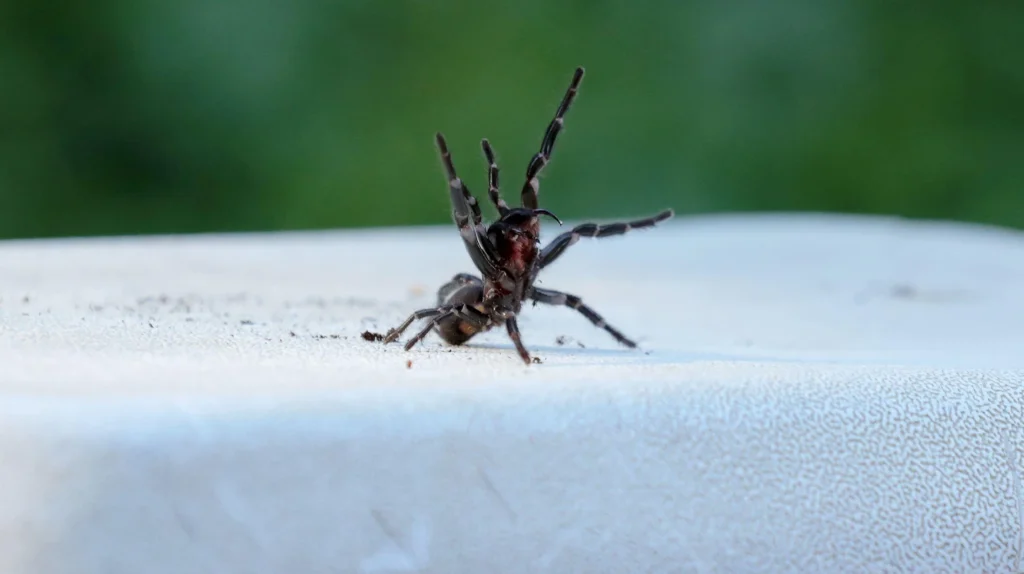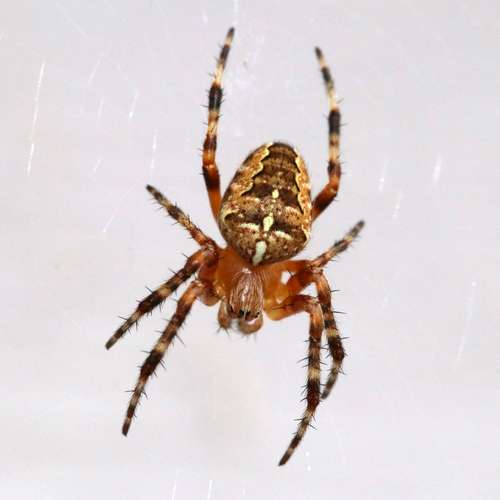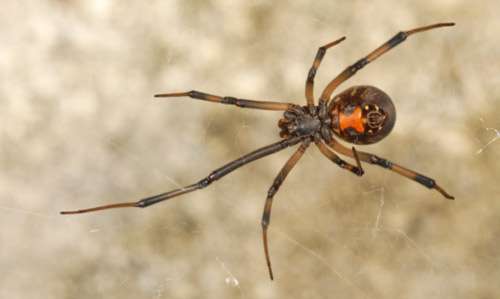
The Sydney funnel-web spider (Atrax robustus), a poisonous mygalomorph spider species unique to eastern Australia, is frequently observed within a 100 km (62 mi) radius of Sydney. It is a member of the Australian funnel-web spider family. If left untreated, its bite can result in serious sickness or death in people.
The Sydney funnel-web has a body length of between one and five centimeters (0.4 to 2 in). Both sexes have shiny, dark skin that ranges in color from blue-black to black to brown or dark plum.
Physical Appearance
The body length of the Sydney funnel-web ranges from 1 to 5 cm, and it is medium to large in size (0.4 to 2 in). Both sexes have glossy, dark skin that ranges in color from blue-black to black, brown, or dark plum. The nearly hairless, smooth, and shiny carapace that covers the cephalothorax. Spinnerets at the end of their abdomen that resemble fingers are another distinguishing feature. Males with shorter lifespans are smaller than females but have longer legs. The spider’s legs often measure six to seven centimeters in length.

Habitat
Sydney serves as the hub for distribution, which reaches the Central Coast in the north, the Illawarra region in the south, and the Blue Mountains in the west in New South Wales. The spider inhabits damp microhabitats, including beneath logs and vegetation. The majority of Sydney funnel-web spiders are terrestrial, and they prefer environments with damp sand and clays.
Food and Feeding Habits
In protected locations beneath logs and rocks, funnel-webs burrow where they can find a cold, humid habitat. When possible food, such as cockroaches, beetles, small lizards or snails, walk across silken trip-lines that the spider has laid out around the outside of its burrow, funnel-webs surge out of the entrance. After that, they go back to their underground home to eat.
Risk to humans
Funnel-web bites are deadly, thus the patient should be transported to the hospital and given antivenom if necessary. First aid should be administered right away using the pressure bandage/immobilization technique (as for snake bite). A neurotoxic present in the venom targets the human nerve system and, in the worst scenarios, can be fatal. However, since the invention of antivenom, there have been no fatalities.
Reproduction
At four years old, males become sexually mature, and females follow a year later. The mature male begins to wander when the weather conditions are right, such as after a downpour when the ground is soggy and the air is humid. Females wait for a potential suitor to arrive in their burrows for almost their entire lives. The male then decides to take his life into his own hands by luring the female out of her burrow and soothing her so she will let them mate rather than turn into his next meal! The female, who stores them in her burrow until the spider-lings hatch, produces approximately one hundred eggs.
As Pet
Enclosure
Terrariums, containers, and tubs made of plastic or glass can all be used as enclosures. ensuring that the dirt (substrate), which varies according to the size of the spider, is sufficient. Slings and young animals require about 8 cm, while adults require at least 10 cm. Slings can be kept until they are juveniles in a 500ml container, which is a fantastic choice (40-50mm). As a safety measure, a lid that is secure is needed.
Substrate
Coir peat with musk moss. As it holds burrows effectively, coir peat combined with sand in an 80/20 ratio is advised. Sphagnum moss, which holds moisture and gives the surface some structure for the spider to hide in, should be applied.
Moister
Not overly wet or dry. The tarantula depends on moisture to survive. This can be achieved by maintaining a high humidity level inside of their container, often between 60 and 80%. Making sure the substrate is wet is the ideal technique to accomplish this. It needs to be moist enough to clump when compressed but not so moist that it leaks extra water when squeezed. Weekly misting of the tarantula’s terrarium is another option for preserving humidity.
Feeding
Usually one to three times per week. Smaller people typically eat more frequently. Keep an eye out for any changes in behavior that might indicate hunger in your funnel-webs. It will show signals of hunger by sitting with its legs spread at the entrance to its burrow or by pacing the enclosure. Mealworms, wood roaches, and crickets are all edible, though crickets are the most widely consumed. It is recommended that the prey be no larger than half the spider’s size. It is better to remove the live insect the following day if it is not consumed overnight.
Temperature
Not too cold or too hot. Funnel-webs can withstand a wide range of temperatures and are found in alpine, tropical, and arid regions of Australia. cannot be kept at temperatures of 14 or 28 for extended periods of time. Keep your spider away from the sun’s harsh rays. Never heat an enclosure directly; if you live in a colder climate, heat the room instead.
Table





